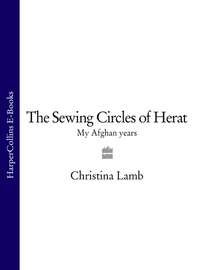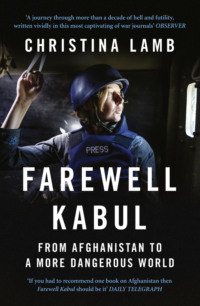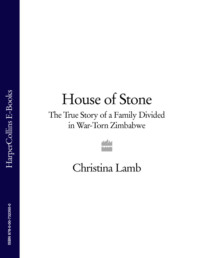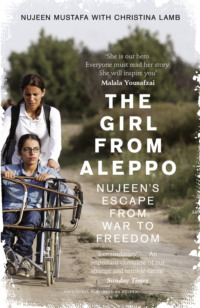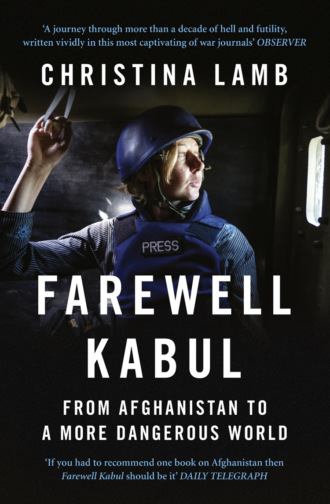
Полная версия
Farewell Kabul: From Afghanistan To A More Dangerous World
By the time of the vote, I was on a plane. International air traffic had reopened on 13 September after an unprecedented closing of the skies. Most journalists headed to northern Afghanistan to join up with the Northern Alliance, or to Peshawar in north-west Pakistan, the closest Pakistani city to the border with Afghanistan, and the headquarters of the mujaheddin during the war against the Russians. I headed further west, to the earthquake-prone town of Quetta, which was the nearest Pakistani city to Kandahar, the heartland of the Taliban, and like Peshawar had long been home to hundreds of thousands of Afghan refugees. It was also where my oldest Afghan friend, Hamid Karzai, lived.
I checked into the Serena Hotel, where there were soon so many journalists that makeshift beds were set up in the ballroom. I was happy to be back. From my window I could see hills the colour of lion-skin, populated with tribes so troublesome that the British Raj had given up trying to control them and instead given them guns and cash to leave them alone. Beyond those hills lay Afghanistan.
The town used to be on the overland route for backpackers, and in the 1980s I would see big orange double-decker buses that had come all the way from London’s Victoria station. The buses did not come any more, but little else had changed. On the main Jinnah Road you could still buy a rifle or some jewelled Baluch sandals, both of which were sported by the local men who wandered around hand in hand.
I met up with commanders I had known back in the 1980s when they were young, dashing and full of hope. Now they were potbellied, greying and jaded, but they had been given a sudden lease of life by finding their long-forgotten country the focus of world attention. Just as in the old days we sat cross-legged on cushions on the floor drinking rounds of green tea, served with little glass dishes of boiled sweets (in place of sugar) and crunchy almonds.
The most important call of all my old contacts was Karzai, whom I had got to know when we lived near each other in Peshawar and he was spokesman for the smallest of the seven mujaheddin groups fighting the Russians. His family were prominent landowners from the grape-growing village of Karz, near Kandahar. His father had been Deputy Speaker of parliament, and his grandfather Deputy Speaker of the senate; they were from the majority Pashtun tribe, the same Popolzai branch of the royal family as the unfortunate murdered King Shah Shuja. Karzai had been at school in the Indian hill city of Simla when the Russians invaded, and would never forget the moment his schoolfriends gave him the news. ‘I felt I could no longer hold my head high as a proud Afghan,’ he told me. Though he was the youngest of six brothers, he became spokesman for the family as the only one to stay after the others moved to America and opened a chain of Afghan restaurants called ‘Helmand’ in Baltimore, Boston and San Francisco.
‘If you want to understand Afghanistan you must understand the tribes,’ he urged me on our very first meeting. He invited me to his home to meet elders from across southern Afghanistan who soon had me spellbound with astonishing stories that mostly involved fighting and feuding.
Karzai insisted that the key city of Afghanistan was Kandahar, where its first King, Ahmat Shah Durrani, had been crowned. He took me on my first trip there in 1988, the only time he had gone on jihad, when we rode around on motorbikes and had several narrow escapes from Soviet bombs and tanks. The group we had travelled with, the Mullahs’ Front, went on to become Taliban.
A year after that trip the last Soviet soldier crossed the Oxus River out of Afghanistan, but what seemed an astonishing victory quickly soured as the Afghan mujaheddin all started fighting each other. I moved on to other stories in other countries and continents that didn’t bruise my heartstrings quite as much. I still went back and forth to Pakistan, however, and had last seen Karzai in 1996, when we quarrelled bitterly in Luna Caprese, the only Italian restaurant in Islamabad after he told me he was fundraising for the Taliban.
Later he had turned against them, saying Pakistanis had taken over the Taliban and Arabs had taken over the country, and like Dr Abdullah he kept banging on offices in Whitehall and Washington with Cassandra-like warnings. For years, he too had met only closed doors. The British Foreign Office didn’t even have an Afghan section, and a diplomat in the South Asia section told me Karzai would be palmed off with the most junior official, who would moan, ‘Not him again.’
He moved to Quetta, to the house of his genial half-brother Ahmed Wali, who had supported him through all those years when everyone else had forgotten Afghanistan. Now, of course, everything had changed. As a fluent and eloquent English speaker he had a queue of diplomats, spies and journalists at his, or rather Ahmed Wali’s, door.
Karzai greeted me warmly. His father had been assassinated in 1999 by men on motorbikes as he was walking back from prayers at the mosque around the corner from the house. Karzai blamed the Taliban and Pakistan’s powerful military intelligence agency, ISI (Inter-Services Intelligence). He had become head of the tribe after that and needed a wife, so in a betrothal arranged by his mother he married his cousin Zeenat, a gynaecologist at Quetta hospital.
He was shocked by 9/11. ‘If only people had listened,’ he said.‘Everything will change now,’ I replied.
Some things, it seemed, hadn’t changed. Back in the 1980s we had endlessly discussed how ISI were pulling the wool over the eyes of the CIA, which had given them carte blanche to distribute billions of American and Saudi dollars and weapons to the mujaheddin fighting the Russians. Karzai and other Afghans had not forgiven ISI for the way they directed the vast majority to their favourites, the fundamentalist Gulbuddin Hekmatyar and Jalaluddin Haqqani, or diverted it to fund their own proxy war in Kashmir as well as build their nuclear bomb. In those days they didn’t really hide this, and I’d even been to visit one of their militant training camps just outside Rawalpindi. Their openness had some limits. In 1990, when I wrote stories that Karzai had helped me research on ISI’s interference and on selling arms to Iran, I had been picked up from my apartment in Islamabad, threatened and interrogated by ISI for a night, followed for a week by two cars and a red motorbike, even to a friend’s wedding, then eventually deported.
Now over green tea Karzai insisted that Pakistan was again lying to the US. ‘They are saying they have stopped supporting the Taliban because otherwise the US will declare them a terrorist sponsor state and bomb them too,’ he said. ‘The Americans told them you are either with us or against us. But you and I know it’s an ideology, not just a policy. I promise you they are still supplying arms to the Taliban.’
To start with, I wasn’t sure I believed him. The eyes of the world were on this region. Surely Pakistan would not be so reckless. But I did know that they had got away with it before, and how personally involved many ISI officers in the field were with some of the Taliban after more than twenty years of working with them. I’d had enough discussions with them to agree with Karzai that for many it was an ideology, not a policy – some told me they saw the Taliban as a pure form of Islam, and would like a similar government in Pakistan.
Some strange things were happening. Shortly after 9/11, when President George W. Bush had asked Pakistan’s military ruler General Pervez Musharraf for cooperation, Musharraf had asked that the US hold off any action until Pakistan had made a last try at persuading the Taliban to hand over bin Laden. General Mahmood Ahmed, the ISI chief, who had helped to organise the coup that brought Musharraf to power, led a delegation of clerics to Kandahar to personally appeal to Mullah Omar. But Mufti Jamal, one of the clerics who went with him, told me that the General made no such request. ‘He shook hands very firmly with Mullah Omar and offered to help, then later even made another secret mission without Musharraf’s knowledge.’
It seemed ISI had calculated that however the Americans retaliated in Afghanistan, they would eventually lose patience, and like all foreigners before them be driven out. ‘We knew the Americans could not win militarily in Afghanistan,’ I was told by General Ehsan ul Haq, who later replaced Mahmood as ISI chief. Pakistan would, however, still be next-door, so it was understandably hedging its bets. ‘The Americans forget other people have national interests too,’ said Maleeha Lodhi, then Pakistan’s Ambassador to Washington.
From Quetta I went to Rawalpindi to see General Hamid Gul, who had been head of ISI when I lived in Pakistan, running the Afghan jihad. He was virulently anti-American, blaming the US for his dismissal in May 1989. It was the first time I had spoken to him since my deportation, and he insisted to me that the people who had abducted and interrogated me were ‘rogue agents’. He still lived in an army house, and somehow it seemed to me that he was still involved. He had personally known bin Laden, and encouraged Arabs to come and fight against the Russians in Afghanistan, setting up reception committees, which as he said the CIA was very happy to use at the time. Indeed, on his mantelpiece was a piece of the Berlin Wall sent to him by German Chancellor Helmut Kohl. It was inscribed: ‘With deepest respect to Lt Gen Hamid Gul who helped deliver the first blow.’ ‘You in the West think you can use these fundamentalists as cannon fodder and abandon them, but it will come back to haunt you,’ he had told me in a rare interview just after the Soviet withdrawal. At the time I had not understood what he meant.
General Gul insisted that 9/11 was orchestrated not by bin Laden but Mossad, the Israeli spy agency, to set the West against Muslims and provide an excuse to launch a new Christian Crusade. ‘No Jews went to work in the World Trade Center that day,’ he claimed. He was dismissive about the latest foreigners to enter Afghanistan. ‘The Russians lost in ten years, the Americans will lose in five,’ he said. ‘They are chocolate-cream soldiers, they can’t take casualties. As soon as body bags start going back, all this “Go get him” type of mood will subside.’
Meanwhile, we waited. War had come to America, 3,000 people had been killed in the Twin Towers, and we knew the US administration would soon retaliate. ‘My blood was boiling,’ Bush later wrote in his memoir. ‘We were going to find out who did this and kick their ass.’ In a televised address to both houses of Congress nine days after 9/11, he told the nation that ‘every necessary weapon of war’ would be used to ‘disrupt and defeat the global terror network’. He warned that ‘Americans should not expect one battle, but a lengthy campaign unlike any other we have ever seen.’
There was one problem. When 9/11 happened, the CIA did not have a single agent in Afghanistan. Only a handful had been there in the previous decade, and they were in the north. The CIA had no contacts among Pashtuns in the south. The FBI had only one officer dedicated to bin Laden. At Fort Bragg the top US special forces continued to be taught Russian, as if the Cold War had not gone away.
While journalists quickly found their way into Northern Alliance strongholds, renting all the available cars and houses, the military took much longer to arrive. The first Americans into Afghanistan after the journalists were a CIA team headed by a man who, at fifty-nine, had thought his days in the field were long over. One of the few agents to have gone to Afghanistan in recent years, Gary Schroen had been involved with Afghanistan on and off since 1978, and had close contacts with the Northern Alliance. He was preparing for retirement when he was called up by the Counter-Terrorism Center (CTC), much to his wife’s annoyance. Seventeen days after 9/11 his seven-man team were on an old Russian helicopter into the Panjshir valley to link up with the Northern Alliance.
Apart from communications equipment, the most important part of their baggage was a large black suitcase containing $3 million in cash. On the first night they gave $500,000 to Engineer Aref, intelligence chief for the Northern Alliance, followed by $1 million the next day to Marshal Fahim, who had succeeded Ahmat Shah Massoud as military commander. More money was sent, and within a month they had handed out $4.9 million.
The plan was to send teams of US special forces to join up with Afghan commanders. The Americans would then direct airstrikes using SOFLAMs (Special Operations Forces Laser Acquisition Markers) to pinpoint targets. They also had GPS systems to provide coordinates, as these could be used in all weathers. B52s would then fly over and drop 2,000-pound smart bombs, which would pulverise the target.
However, when the bombing started, almost a month after 9/11, bureaucratic delays and infighting in Washington meant there was still not a single US soldier inside Afghanistan. The only on-the-ground information was coming from Schroen’s CIA team and the Afghans.
From the start there was friction. America wanted intelligence on al Qaeda safe houses and camps, and most of all they wanted the man behind 9/11. Before he had left the US, Schroen’s boss Cofer Black had told him, ‘I want you to cut bin Laden’s head off, put it on dry ice, and send it back to me so I can show the President.’ The Northern Alliance commanders were more interested in targeting Taliban front lines so they could advance on Kabul and take power.
On Friday, 7 October, President Bush stood in the Treaty Room of the White House and addressed America, announcing the launch of Operation Ultimate Justice (which was quickly renamed Operation Enduring Freedom). A few hours earlier – night-time in Afghanistan – an awe-inspiring fleet of seventeen B1, B2 and B52 bombers had taken off from bases in Missouri and Diego Garcia to drop their bombs on one of the poorest places on earth. Alongside them were twenty-five F14 and F18 fighter jets flown off the decks of aircraft carriers USS Enterprise and USS Carl Vinson in the Arabian Sea. Fifty Tomahawk missiles were launched from American ships and a British nuclear submarine. Several had been painted with the letters ‘FDNY’ – Fire Department of New York – in remembrance of the firefighters who lost their lives trying to rescue victims at the Twin Towers. The heaviest bombing that night was carried out by the B52s, which rained 2,000-pound JDAMs as well as hundreds of unguided bombs aimed at taking out the Taliban air force and suspected al Qaeda training camps in eastern Afghanistan. That first night they struck thirty-one targets.1 The US State Department sent a cable to Mullah Omar via Pakistan informing him that ‘every pillar of the Taliban regime will be destroyed’.
In my hotel room in Quetta I watched on CNN the Pentagon videos of the planes setting off on the bombing raids, and the flashes as targets were hit. Taken on night-vision cameras, the footage was green, with a ticking digital timer running at the bottom, and looked like a video game. I wondered what the Americans could bomb in that country of ruins, with no real infrastructure. Soon they found themselves running out of targets. All the air power in the world was of little use when what they were really fighting was an ideology, not a conventional army.
Our own movements were curtailed by Pakistani minders. For our ‘security’ we were not allowed out of the hotel without the company of one of the ISI agents who frequented the lobby. I’d found a Fuji photographic shop that had a back door into the market through which I could be met by an old friend. He would whisk me off to meet tribal elders or Afghan commanders so they could speak freely while my minder was watching TV in the Fuji shop. I knew I was testing their patience, so sometimes I met people in what we called ‘Nuclear Mountain Park’ – its centrepiece was a model of Chagai in the Baluch hills, where Pakistan had carried out its first nuclear tests three years earlier on what was referred to as ‘Yaum-e-Takbeer’, or Allah’s Greatness Day. Every evening people came out to walk round and round the model nuclear mountain, eating ice creams from a cart decorated with red-tipped rockets.
When the US bombing started across the border there were riots in Quetta, and anything perceived as Western was attacked. In Quetta this was not a lot – basically the cinema and the HSBC bank, which had its cashpoint ripped out of the wall, causing untold inconvenience to us correspondents, as it was the only one. The protests gave ISI an excuse to lock us in the hotel altogether, on the grounds that it was too dangerous for us to venture out.
I kept thinking of what Karzai had told me about Pakistan. Before we were locked in I managed to go to the frontier town of Chaman, where I met a chief of the Achakzai tribe, whose people lived on both sides of the border and controlled the smuggling routes in and out. He told me that trucks coming from the National Logistics Company of Pakistan’s army, supposedly transporting flour, were actually full of weapons for the Taliban.
Nine days into the bombing, on 16 October, a second CIA team, Team Alpha, arrived in Afghanistan, joining General Abdul Rashid Dostum in the northern city of Mazar-i-Sharif. The choice caused consternation among the Northern Alliance leadership. The whisky-loving Uzbek and his feared Jowzjan militia were notorious for atrocities, such as driving over prisoners with tanks, and had fought alongside the Soviets during the jihad, fighting pitched battles against Ahmat Shah Massoud’s forces. Dostum switched over to the mujaheddin in 1992 when the fall of the Soviet-backed President Mohammad Najibullah was imminent, and had only recently linked up with the Northern Alliance. In their view he was not to be trusted. They thought the CIA team should have been placed with their long-time commander Mohammad Ustad Atta, Dostum’s rival for control of the city.
The first US military to set foot in Afghanistan was special forces team ODA 555, codenamed ‘Triple Nickel’, which was flown in from Uzbekistan and landed on the Shomali plains north of Kabul on 19 October to join Marshal Fahim and his CIA advisers. The following day a second special forces team, ODA 595, joined General Dostum in the northern city of Mazar-i-Sharif. A third group was dropped south of Kandahar. Using SOFLAMs, they laser-guided bombs from US fighter jets onto Taliban targets with such precision that Dostum bragged on the radio to Taliban that he had a ‘death ray’. They also attempted to organise the Afghan fighters, and were joined by SAS and some Australian special forces.
Back in Quetta, the nights had started to chill. We had all grown tired of the nightly lamb barbecue and fresh apple juice in the orchard. American newspapers were already talking of quagmires. It felt as if we might be there for a long time.
One day, shortly after the bombing had started, I knocked at Karzai’s door to be told by his assistant, Malik, that he had gone away.
‘Where has he gone?’ I asked.
‘Karachi,’ he replied.
Malik was not a good liar. ‘He’s gone to Afghanistan, hasn’t he?’ I said.
Karzai had told me he’d been planning to go to southern Afghanistan to try to raise support. I’d begged him to take me along. ‘Taking you inside is as easy as cracking this nut,’ he had said, holding up an almond. ‘The problem is what to do then.’
He’d always felt insecure about the fact that he hadn’t actually fought in the jihad. The only time he had gone inside Afghanistan during the war against the Russians was our trip to Kandahar in 1988. If he was going to play an important role in whatever government replaced the Taliban, he needed to prove his bravery. Also, Pakistan had cancelled his visa, so if he stayed in Quetta he could be arrested.
His intention was to go and rally the southern tribes against the Taliban. He seemed to think this would be quite easy. I couldn’t help remembering our own trip to Kandahar, and the way we kept almost being bombed by the Russians as he naïvely broadcast his presence everywhere by radio. Now he was heading into the Taliban’s own backyard.
Ahmed Wali said he’d tried to dissuade him, but to no avail. One day Karzai told his wife he was going to visit some relatives near the border, and to pack him a toothbrush. ‘If I don’t come back after two days forget about me,’ he had said.
He’d set off on a second-hand motorbike, accompanied by a few trusted elders. He had asked for help from the CIA, meeting with his case officer ‘Casper’ in Islamabad. They thought his mission was crazy, so provided him only with a satellite phone and an emergency phone number. He was so poorly equipped that he had to send someone back out to Ahmed Wali in Quetta on a motorbike with the phone batteries for charging.
Over in the east, another old friend from the jihad days had gone into Afghanistan with the same idea. Abdul Haq had been the main mujaheddin commander in the Kabul area during the Russian occupation, and had lost his right foot to a landmine. Like Karzai he was a long-time critic of ISI. He had kept fighting, but eventually left Peshawar for Dubai after his wife and son had been killed there in 1999 – he believed by ISI. After 9/11 he returned to Peshawar and began renewing his old mujaheddin networks. While Karzai headed west, Abdul Haq gathered supporters to head into his home area of eastern Afghanistan around Jalalabad, where his family were very influential, and planned to start a Pashtun uprising against the Taliban.
A charismatic man with twinkling eyes, Abdul Haq always liked to talk. Back in the eighties I had spent many afternoons with him in his house in Peshawar, eating pink ice cream and listening to his stories of the war and why it was going wrong. Predictably, he had told journalists of his plans before setting off over the border on 21 October with his nephew Izzatullah and seventeen men, mostly veterans of the jihad. They had travelled in pick-ups, crossing the border the old way near Parachinar, stopping for the night under the stars, sleeping under Orion and the Milky Way.
It was hard for Haq to walk far over the rugged mountains because of his artificial foot, so the next morning they mounted horses in Jaji, near where bin Laden used to have a camp. They rode through the Alikhel gorge, which had been a favourite spot for ambushing Soviet convoys. But just as their own forces had cut off that road in the past, they soon found themselves cut off by the Taliban, and in the midst of a firefight.
As the bullets were flying, Izzatullah ducked behind a rock and managed to make a call to the US on the satellite phone. He telephoned Bud McFarlane, a retired CIA agent who had been a long-time backer of his uncle. McFarlane contacted the Agency headquarters at Langley, Virginia. But they could do nothing, and the men were captured and taken to Jalalabad.
On 26 October we got the news that Haq had been executed. He was forty-three. I was horrified. He seemed to me to have been one of the genuinely good people, and someone who might have been critical for Afghanistan’s future. His friends believed he had been betrayed by ISI.
I was worried about Karzai.
Frustrated by not being able to report freely in Quetta, I flew to Karachi to meet Mufti Nizamuddin Shamzai, a cleric close to Mullah Omar and the Taliban who headed the Banuri complex, the city’s largest madrassa. Some said it was he who had first introduced Mullah Omar and bin Laden. He laughed at the idea that Pakistan had stopped supporting the Taliban. He had personally declared a fatwa against the US.
The evening I returned to Quetta I went to Ahmed Wali’s house. We spoke to Karzai on the satellite phone, and he told me some of the things he had seen crossing the border. I got back to the Serena just before the 9 p.m. curfew, planning to write my story for my paper the next day.
I am lucky to sleep well even in war zones, and was deeply asleep when around 2 a.m. I was woken by pounding on my door. Through the spyhole I could see the hotel’s duty manager with a group of five men. Wearing grey shalwar kamiz and aviator glasses even at night, they were instantly identifiable as ISI.




